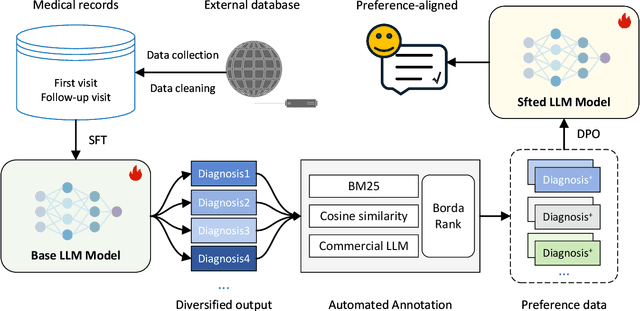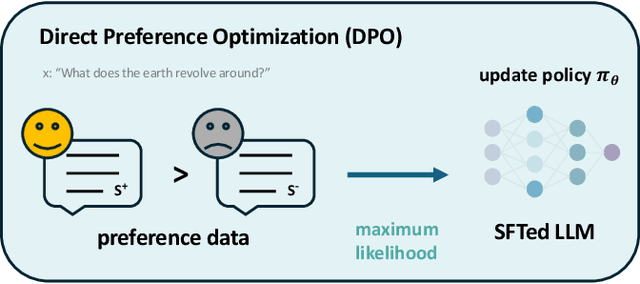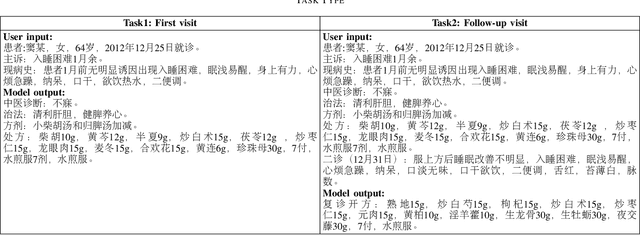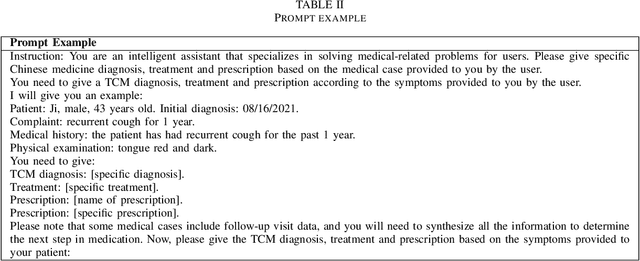Song Yu
Enhancing the Traditional Chinese Medicine Capabilities of Large Language Model through Reinforcement Learning from AI Feedback
Nov 01, 2024



Abstract:Although large language models perform well in understanding and responding to user intent, their performance in specialized domains such as Traditional Chinese Medicine (TCM) remains limited due to lack of expertise. In addition, high-quality data related to TCM is scarce and difficult to obtain, making large language models ineffective in handling TCM tasks. In this work, we propose a framework to improve the performance of large language models for TCM tasks using only a small amount of data. First, we use medical case data for supervised fine-tuning of the large model, making it initially capable of performing TCM tasks. Subsequently, we further optimize the model's performance using reinforcement learning from AI feedback (RLAIF) to align it with the preference data. The ablation study also demonstrated the performance gain is attributed to both supervised fine-tuning and the direct policy optimization. The experimental results show that the model trained with a small amount of data achieves a significant performance improvement on a representative TCM task.
Adaptive optical signal-to-noise ratio recovery for long-distance optical fiber transmission
Aug 02, 2024



Abstract:In long-distance fiber optic transmission, the optic fiber link and erbium-doped fiber amplifiers can introduce excessive noise, which reduces the optical signal-to-noise ratio (OSNR). The narrow-band optical filters can be used to eliminate noise and thereby improve OSNR. However, there is a relative frequency drift between the signal and the narrow-band filter, which leads to filtered signal instability. This paper proposes an adaptive OSNR recovery scheme based on a Fabry-Perot (F-P) cavity with mode width of 6 MHz. Utilizing the comb filtering of F-P cavity, the noise around the carrier and sidebands of the signal is filtered out simultaneously. To avoid frequency mismatch, we propose a double-servo scheme to suppress relative frequency drift between the signal and the F-P cavity. We constructed a stable radio frequency transfer system based on passive phase compensation and compared our scheme with other OSNR recovery schemes based on optical filters. Compared to the schemes based on dense wavelength division multiplexing (DWDM) and Waveshaper, our scheme demonstrates an improvement in OSNR of carrier by at least 12 dB and sidebands by at least 23.5 dB. The short-term transfer stability (1 s) is improved by one order of magnitude compared to DWDM and half an order of magnitude compared to Waveshper. This scheme can be applied to the recovery of signals with low OSNR in long-distance fiber optic transmission, improving signal quaility and extending the transmission distance limit.
 Add to Chrome
Add to Chrome Add to Firefox
Add to Firefox Add to Edge
Add to Edge